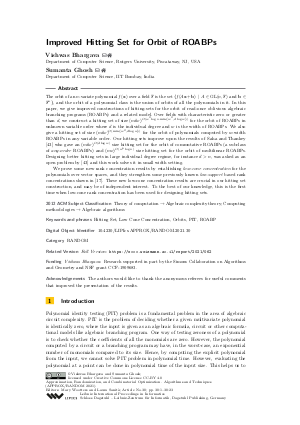LIPIcs.APPROX-RANDOM.2021.30.pdf
- Filesize: 0.86 MB
- 23 pages

 Creative Commons Attribution 4.0 International license
Creative Commons Attribution 4.0 International license





























Feedback for Dagstuhl Publishing